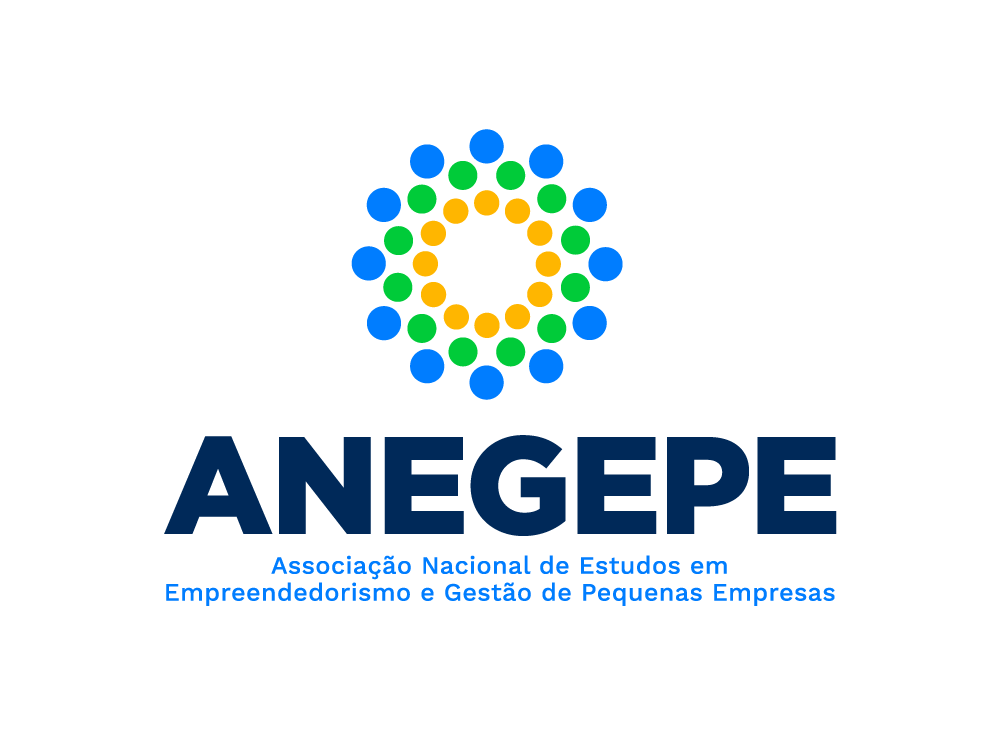Absorptive capacity and the diffusion of innovation in NTBFs and startups: A study in the Brazilian Federal District
DOI:
10.14211/regepe.esbj.e2380Keywords:
Absorptive capacity, Innovation, Diffusion of innovation, Startups, New technology-based firmsAbstract
Purpose: To verify the contribution of the Absorptive Capacity (ACAP) to the diffusion of innovation in New Technology-Based Firms (NTBFs) and startups in the Brazilian Federal District. Method: In-depth interviews study with 20 innovative firms, 12 (twelve) startups and 8 (eight) NTBFs. The results are discussed in two items of analysis: Analysis of the profile of the firms and the Analysis of the Descending Hierarchical Classification (DHC) and of the content, in a comparative perspective around 14 thematic categories. Findings: The development factors associated with the Potential of Absorptive Capacity (PACAP) were observed as the antecedents of the diffusion of innovation. On the other hand, factors related to the Realized Absorptive Capacity (RACAP) are involved directly in the diffusion of innovation, with emphasis on the ability to generate innovation results through channels of market introduction, adoption of new technologies and financial investments. Theoretical/methodological contributions: The study contributes to the theoretical field, still lacking in production, especially regionally, on the relationship between the constructs investigated in the context of innovative firms. Supporting programs, can gain insights to improve the advanced support that facilitates access to knowledge to be adopted and conversion into innovation. Relevance/originality: The research extends the understanding of the relationship between ACAP and the diffusion of innovation, involving the absorption of knowledge and the dynamics of these constructs through the integration of critical factors in specific contexts still little investigated, such as in NTBFs and startups involving regional innovation ecosystems. Management/Social Contributions: The empirical investigation and factors addressed provide managerial implications for the practices of these firms when developing innovations, as well as for planning, developing or strengthening innovation programs and policies.
Downloads
References
ABStartups - Associação Brasileira de Startups. (2019). Associação Brasileira de Startups: Mapeamento de Comunidades região Centro-Oeste. https://abstartups.com.br/mapeamento-Centro-Oeste/
Anatoliivna, V. O. (2013). Absorptive capacity in organizational theories: Learning, innovation, managerial cognition. Marketing & Management of Innovations, 4, 190-199. https://doi.org/10.21272/mmi.2013.4-18
Aribi, A., & Dupouët, O. (2015). The role of organizational and social capital in the firm’s absorptive capacity. Journal of Knowledge Management, 19(5), 987-1006. https://doi.org/10.1108/JKM-05-2015-0169
Bardin, L (1977). Análise de conteúdo. Lisboa: Edições.
Barnett, J., Vasileiou, K., Djemil, F., Brooks, L., & Young, T. (2011). Understanding innovators' experiences of barriers and facilitators in implementation and diffusion of healthcare service innovations: A qualitative study. BMC Health Services Research, 11(1), 342-342. https://doi.org/10.1186/1472-6963-11-342
Benson, D., & Ziedonis, R. H. (2009). Corporate Venture Capital as a Window on New Technologies: Implications for the Performance of Corporate Investors When Acquiring Startups. Organization Science, 20(2), 329-351. https://doi.org/10.1287/orsc.1080.0386
Blank, S., & Dorf, B. (2012). The step-by-step guide for building a great company. Pescadero, Calif: K&S Ranch, Inc.
Burcharth, A. L. L. A., Lettl, C., & Ulhøi, J. P. (2015). Extending organizational antecedents of absorptive capacity: Organizational characteristics that encourage experimentation. Technological Forecasting and Social Change, 90, 269-284. https://doi.org/10.1016/j.techfore.2013.12.024
Camargo, B. V. (2005). ALCESTE: Um programa informático de análise quantitativa de dados textuais. In A. S. P. Moreira, B. V. Camargo, J. C. Jesuíno, & S. M. Nóbrega (Eds.), Perspectivas teórico-metodológicas em representações sociais (pp. 511-539). João Pessoa, PB: Editora da Universidade Federal da Paraíba.
Camargo, B. V., & Justo, A. M. (2013). IRAMUTEQ: um software gratuito para análise de dados textuais. Temas em Psicologia, 21(2), 513-518. https://doi.org/10.9788/TP2013.2-16
Camisón, C., & Forés, B. (2010). Knowledge absorptive capacity: New insights for its conceptualization and measurement. Journal of Business Research, 63(7), 707-715. https://doi.org/10.1016/j.jbusres.2009.04.022
Chung, D., Jung, H., & Lee, Y. (2021). Investigating the relationship of high-tech entrepreneurship and innovation efficacy: The moderating role of absorptive capacity. Technovation, 111, 102393. https://doi.org/10.1016/j.technovation.2021.102393
Cohen, W., & Levinthal, D. (1990). Absorptive Capacity: A New Perspective on Learning and Innovation. Administrative Science Quarterly, 35(1), 128-152. https://doi.org/10.2307/2393553
Cuvero, M., Granados, M. L., Pilkington, A., & Evans, R. D. (2019). The effects of knowledge spillovers and accelerator programs on the product innovation of high-tech startups: A multiple case study. IEEE Transactions on Engineering Management, 1-14. https://doi.org/10.1109/TEM.2019.2923250
Dabic, M., Vlacic, E., Ramanathan, U., & Egri, C. P. (2020). Evolving absorptive capacity: The mediating role of systematic knowledge management. IEEE Transactions on Engineering Management, 67(3), 783-793. https://doi.org/10.1109/TEM.2019.2893133
Deeds, D. L. (2001). The role of P&D intensity, technical development and absorptive capacity in creating entrepreneurial wealth in high technology startups. Journal of Engineering and Technology Management, 18(1), 29-47. https://doi.org/10.1016/S0923-4748(00)00032-1
Flechas Chaparro, X. A., Kozesinski, R., & Salles Camargo Júnior, A. (2021). Absorptive capacity in startups: A Systematic literature review. Journal of Entrepreneurship, Management and Innovation, 17(1), 57-95. https://doi.org/10.7341/20211712
Flor, M. L., Cooper, S. Y., & Oltra, M. J. (2017). External knowledge search, absorptive capacity and radical innovation in high-technology firms. European Management Journal, 1-12. https://doi.org/10.1016/j.emj.2017.08.003
Fontanella, B. J. B., Luchesi, B. M., Saidel, M. G. B., Ricas, J., Turato, E. R., & Melo, D. G. (2011). Amostragem em pesquisas qualitativas: proposta de procedimentos para constatar saturação teórica. Cadernos de Saúde Pública, 27(2), 388-394. https://doi.org/10.1590/S0102-311X2011000200020
Fukugawa, N. (2013). University spillovers into small technology-based firms: channel, mechanism, and geography. Journal of Technology Transfer, 38(4), 415-431. https://doi.org/10.1007/s10961-012-9247-x
Garengo, P. (2019-2018). How bridging organisations manage technology transfer in SMEs: An empirical investigation. Technology Analysis & Strategic Management, 31(4), 477-491. https://doi.org/10.1080/09537325.2018.1520976
Ho, H., Osiyevskyy, O., Agarwal, J., & Reza, S. (2020). Does ambidexterity in marketing pay off? The role of absorptive capacity. Journal of Business Research, 110, 65-79. https://doi.org/10.1016/j.jbusres.2019.12.050
Hötte, K. (2020). How to accelerate green technology diffusion? directed technological change in the presence of coevolving absorptive capacity. Energy Economics, 85, 104565. https://doi.org/10.1016/j.eneco.2019.104565
Hughes, P., Hodgkinson, I. R., Hughes, M., & Arshad, D. (2017). Explaining the entrepreneurial orientation–performance relationship in emerging economies: The intermediate roles of absorptive capacity and improvisation. Asia Pacific Journal of Management, 1-29. https://doi.org/10.1007/S10490-017-9539-7
Jantunen, A. (2005). Knowledge‐processing capabilities and innovative performance: an empirical study. European Journal of Innovation Management, 8(3), 336-349. https://doi.org/10.1108/14601060510610199
Kato, M. (2020). Founders’ human capital and external knowledge sourcing: Exploring the absorptive capacity of startup firms. Economics of Innovation and New Technology, 29(2), 184-205. https://doi.org/10.1080/10438599.2019.1598670
Larrañeta, B., Galán González, J. L., & Aguilar, R. (2017). Early efforts to develop absorptive capacity and their performance implications: differences among corporate and independent ventures. The Journal of Technology Transfer, 42(3), 485-509. https://doi.org/10.1007/s10961-016-9488-1
Li, Y., Youtie, J., & Shapira, P. (2015). Why do technology firms publish scientific papers? The strategic use of science by small and midsize enterprises in nanotechnology. The Journal of Technology Transfer, 40, 1016. https://doi.org/10.1007/s10961-014-9391-6
Lindelöf, P., & Löfsten, H. (2003). Science park location and new technology-based firms in Sweden–implications for strategy and performance. Small Business Economics, 20(3), 245-258. https://doi.org/10.1023/A:1022861823493
Luo, B. N., Lui, S. S., & Kim, Y. (2017). Revisiting the relationship between knowledge search breadth and firm innovation: A knowledge transfer perspective. Management Decision, 55(1), 2-14. https://doi.org/10.1108/MD-07-2015-0327
Malik, K., & Wei, J. (2011). How external partnering enhances innovation: evidence from Chinese technology-based SMEs. Technology Analysis & Strategic Management, 23(4), 401-413. https://doi.org/10.1080/09537325.2011.558398
Marcon, A., & Ribeiro J. L. D. (2021). How do startups manage external resources in innovation ecosystems? A resource perspective of startups’ lifecycle. Technological Forecasting and Social Change, 171, 120965. https://doi.org/10.1016/j.techfore.2021.120965
Mason, G., Rincon-Aznar, A., & Venturini, F. (2020). Which skills contribute most to absorptive capacity, innovation and productivity performance? Evidence from the US and Western Europe. Economics of Innovation and New Technology, 29(3), 223-241. https://doi.org/10.1080/10438599.2019.1610547
Motohashi, K. (2005). University–industry collaborations in Japan: The role of new technology-based firms in transforming the National Innovation System. Research Policy, 34:, 583-594. https://doi.org/10.1016/j.respol.2005.03.001
Nooteboom, B., Van Haverbeke, W., Duysters, G., Gilsing, V., & Van den Oord, A. (2007). Optimal cognitive distance and absorptive capacity. Research Policy, 36(7), 1016-1034. https://doi.org/10.1016/j.respol.2007.04.003
Mueller, P. (2007). Exploiting entrepreneurial opportunities: The impact of entrepreneurship on growth. Small Business Economics, 28(4), 355-362. https://doi.org/10.1007/s11187-006-9035-9
Rogers, E. M. (1983). Diffusion of innovations. New York: The Free Press.
Rothaermel, F. T., & Thursby, M. (2005). University–incubator firm knowledge flows: assessing their impact on incubator firm performance. Research Policy, 34(3), 305-320. https://doi.org/10.1016/j.respol.2004.11.006
Salviati, M. (2017). Manual do Aplicativo Iramuteq (versão 0.7 Alpha 2 e R Versão 3.2.3). http://www.iramuteq.org/documentation/fichiers/manual-do-aplicativo-iramuteq-par-maria-elisabeth-salviati
Sebrae - Serviço Brasileiro de Apoio às Micro e Pequenas Empresas (2019). Confira as diferenças entre microempresa, pequena empresa e MEI. https://www.sebrae.com.br/sites/PortalSebrae/artigos/entenda-as-diferencas-entre-microempresa-pequena-empresa-e-mei,03f5438af1c92410VgnVCM100000b272010aRCRD
Serrano-Bedia, A. M., López-Fernández, M. C., & García-Piqueres, G. (2012). Complementarity between innovation activities and innovation performance: Evidence from Spanish innovative firms. Journal of Manufacturing Technology Management, 23(5), 557-577. https://doi.org/10.1108/17410381211234408
Sheng, M. L., & Chien, I. (2016). Rethinking organizational learning orientation on radical and incremental innovation in high-tech firms. Journal of Business Research, 69(6), 2302-2308. https://doi.org/10.1016/j.jbusres.2015.12.046
Souza, M. A. R., Wall, M. L., Thuler, A. C. M. C., Lowen, I. M. V., & Peres, A. M. (2018). O uso do software IRAMUTEQ na análise de dados em pesquisas qualitativas. Revista da Escola de Enfermagem da USP; 52. http://dx.doi.org/10.1590/S1980-220X2017015003353
Teigland, R., Gangi, P. M., Flåten, B., Giovacchini, B., & Pastorino, N. (2014). Balancing on a tightrope: Managing the boundaries of a firm-sponsored OSS community and its impact on innovation and absorptive capacity. Information and Organization, 24(1), 25-47. https://doi.org/10.1016/j.infoandorg.2014.01.001
Ubeda, F. M., Ortiz-de-Urbina-Criado, M., & Mora-Valentín, E. (2019). Do firms located in science and technology parks enhance innovation performance? The effect of absorptive capacity. The Journal of Technology Transfer, 44(1), 21-48. https://doi.org/10.1007/s10961-018-9686-0
Veugelers, R., & Cassiman, B. (1999). Make and buy in innovation strategies: evidence from Belgian manufacturing firms. Research Policy, 28(1), 63-80. https://doi.org/10.1016/S0048-7333(98)00106-1
von Briel, F., Schneider, C., & Lowry, P. B. (2019). Absorbing Knowledge from and with External Partners: The Role of Social Integration Mechanisms. Decision Science, 50(1), 7-45. https://doi.org/10.1111/deci.12314
Wang, Z., Wang, Q., Zhao, X., Lyles, M. A., & Zhu, G. (2016). Interactive effects of external knowledge sources and internal resources on the innovation capability of Chinese manufacturers. Industrial Management & Data Systems, 116(8), 1617-1635. https://doi.org/10.1108/IMDS-10-2015-0412
Yang, D., Li, L., Jiang, X., & Zhao, J. (2019). The fit between market learning and organizational capabilities for management innovation. Industrial Marketing Management, 86, 223-232. https://doi.org/10.1016/j.indmarman.2019.12.007
Zahra S. A., & George, G. (2002). Absorptive capacity: a review, reconceptualization, and extension. Academy of Management Review, 27, 185-203. https://doi.org/10.2307/4134351
Zheng, Y., Liu, J., & George, G. (2010). The dynamic impact of innovative capability and inter-firm network on firm valuation: A longitudinal study of biotechnology startups. Journal of Business Venturing, 25(6), 593-60. https://doi.org/10.1016/j.jbusvent.2009.02.001

Downloads
Published
Métricas
Visualizações do artigo: 1534 pdf downloads: 215 Viewer (xml, epub, html) downloads: 0 Mobile downloads: 0
How to Cite
Issue
Section
License
Copyright (c) 2023 Bruno Alencar Pereira, Josivania Silva Farias

This work is licensed under a Creative Commons Attribution 4.0 International License.
Authors who publish in this journal agree to the following terms:
-
The author(s) authorize the publication of the text in the journal;
-
The journal is not responsible for the opinions, ideas, and concepts expressed in the texts, as they are the sole responsibility of their authors;
-
Authors retain copyright and grant the journal the right of first publication, with the work published under the CC BY 4.0
License, which allows sharing the work with acknowledgment of authorship and initial publication in this journal;
-
Authors are allowed and encouraged to post their work (Submitted version, Accepted version [Manuscript accepted by the author], or Published version [Record version]) online, for example in institutional repositories or preprints, as it can lead to productive exchanges as well as earlier and greater citation of published work. REGEPE requires that authors indicate/link the published article with DOI. See the Effect of Open Access.














